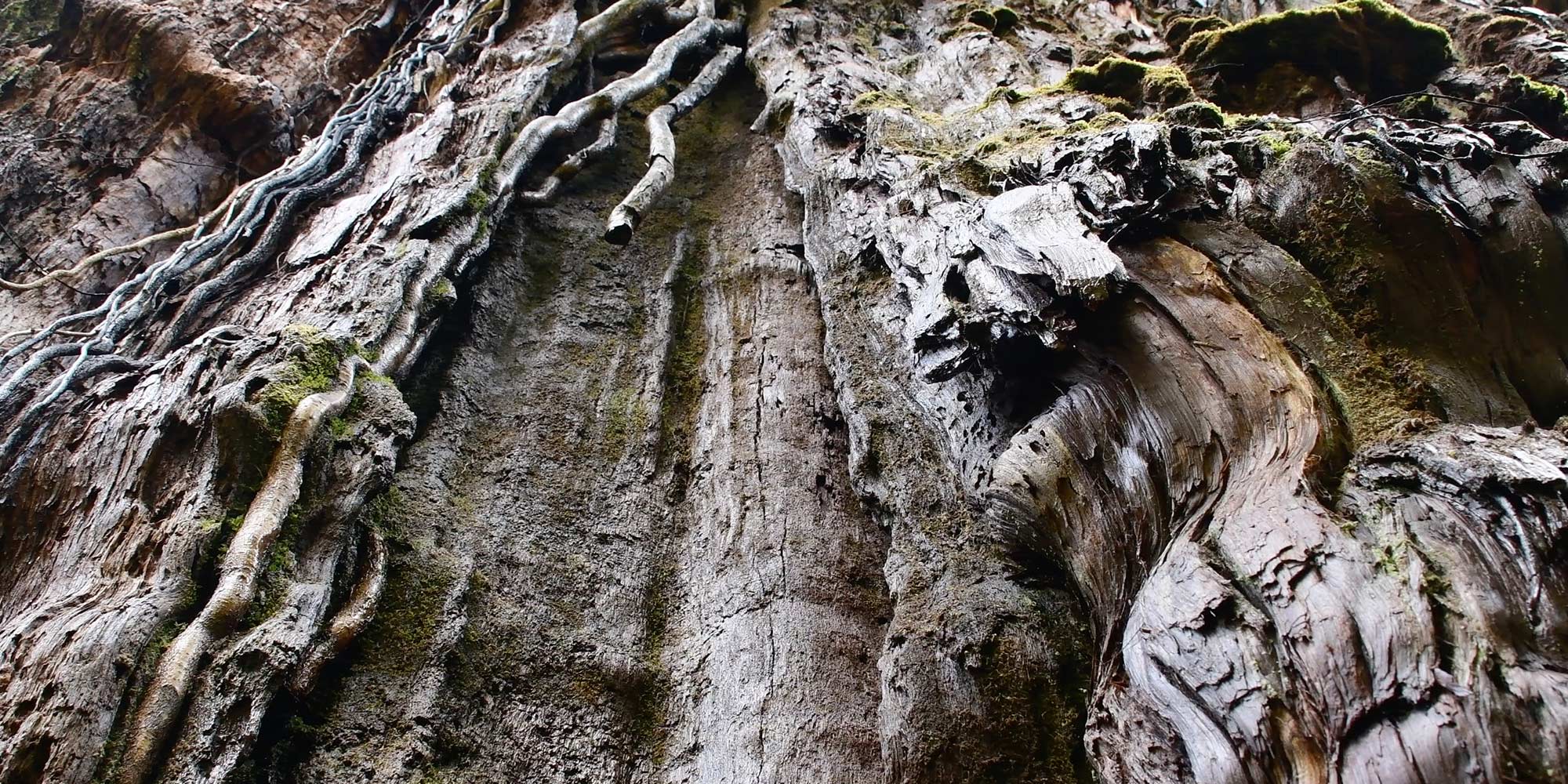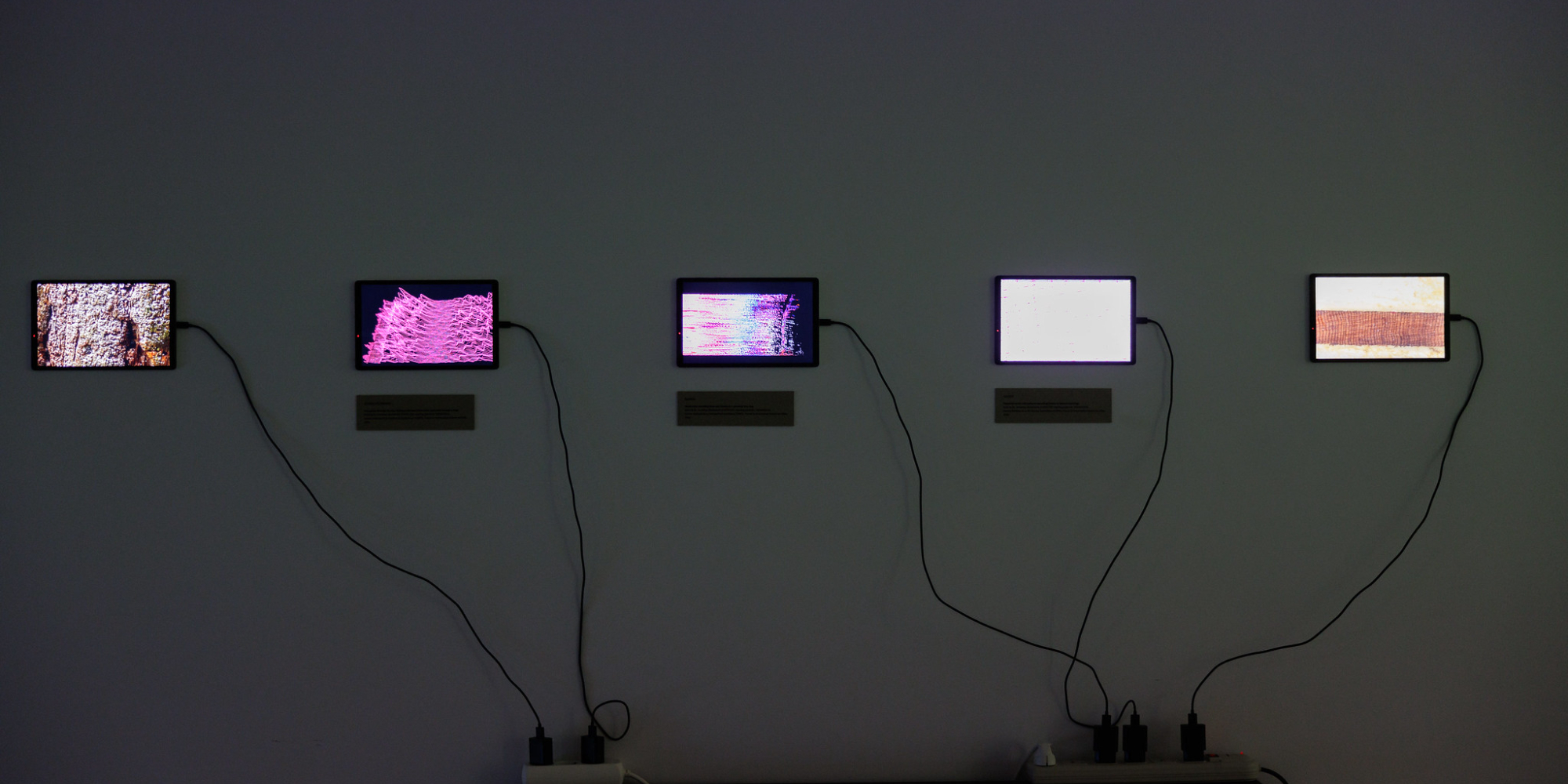The ancient messenger tree at the south of the world
The oldest living tree on Earth could be the Lañilawal tree in southern Chile. Two Chilean environmental scientists have estimated that the Alerce Milenario – known as Lañilawal – is probably more than 5000 years old, the oldest living tree on Earth. Lañilawal remains in the mode of a deferred time, literally a mysterious interval removed from the time scale of human senses. Bringing together a group of artists and the latest scientific research, the Lañilawal project is an approach to get a glimpse of this living time capsule with the purpose of understanding its message in the context of a world that is on the verge of extinction and where science still bears the scars of colonialism.

credit: Maria Paz Peña

credit: Cristian Arriagada

Credit: Jonathan Barichivich
ZurückWeiter
Biography
Jonathan Barichivich Henríquez: After growing up in the Alerce forests of southern Chile, Jonathan has continued his family heritage by protecting nature through science. He works on climate and global ecology as a grantee of the prestigious European Research Council (ERC). Laboratoire des sciences du climat et de l’environnement (LSCE), Paris, and Universidad Austral de Chile.
Antonio Lara, Ph.D. in Geography from the University of Colorado in the United States, academic at the UACh School of Forest Sciences and Natural Resources and principal investigator at the Center for Climate Science and Resilience, CR2.
Rocío Urrutia Jalabert. Has studied Alerce forests since more than a decade ago, focusing on their growth, carbon cycle and vulnerability to climate change. She is now President of Corporación Alerce, an NGO focusing on the conservation of the threatened Alerce forests. Department of Natural Sciences and Technology, University of Aysén / Laboratory of Dendrochronology and Global Change, Universidad Austral de Chile / Center for Climate Science and Resilience, CR2.
Jesús Román Carreño. Visual artist at Institute of Visual Arts UACh and director of Contemporary Arts Musem UACh Valdivia. I’m interested in the notion of order and neatness, time and weight. The time in which the labor force works in the execution of the work; the craftsmanship put at the disposal of a time that is contained in the work and also my body that is the mediator between time and work. I also try to address weight perception. My works can be seen as delicate weightless pieces or as heavy fixed structures.
Ivan Flores Arancibia. PhD in Philosophy (Universitat de Barcelona, UAB, Spain). Director pf Institute of Visual Arts, Austral University of Chile. Currently directs and coordinates several institutional projects (VIDCA Creation, Replica Gallery), two FONDART project, and working on upcoming publications: De la Metaxología (Metales Pesados, 2022) and two artistic books: Cartographies of the In-Between (2022) and Kay-Dittborn-Flores (2022).
Cristian Arriagada Seguel. Lives in the community of Máfil, Los Ríos Region-Chile. Visual Arts at the Austral University of Chile. His work is mainly associated with the territory and the political context. He received the Wabi Sabi scholarship at the first Valdivia International Photography Festival (2019) and has exhibited individually at the Diego Rivera Art Center, Puerto Montt-Chile (2020).
Elisa Figueroa L. Cultural management and development of projects mainly associated with research/creation and articulation in visual arts, through coordination, planning, production and mediation. Director of Barrios Bajo Gallery and FRAGUA: Southern Contemporary Art. Coordinator and producer for various activities and artistic training programs. Facilitator for various creative development workshops/laboratories.
Alejandro Albornoz. Chilean electroacoustic composer and sound artist, PhD in Electroacoustic Composition, University of Sheffield, UK. He has been working on acousmatic and live electronics since 2004. Currently is lecturer and researcher at the Music & Sonic Arts School at the Universidad Austral in Chile. The central topics in his research are the human voice, poetry, algorithms and language in acousmatic pieces, both in multichannel and stereo formats.
Credits
The Lañilawal project is promoted by the Vice President for Research, Development and Artistic Creation and the Faculty of Architecture and Arts of the Austral University of Chile (UACh) and the French National Center for Scientific Research (CNRS). Artistic idea and curatorship by Jonathan Barichivich, María Jesús Román and Ivan Flores Arancibia. Original Sound by Alejandro Albornoz. Camera of Cristian Arriagada. Video editing by Javier Espina, Cristóbal Flores and Jorge Pérez de Arce. Data visualization by Claudio Lavado. Special collaboration by Elisa Figueroa, the Alerce Corporation, Laboratoire des Sciences du Climat et de l’Environnement (LSCE) and Conaf – Ministry of Agriculture.





